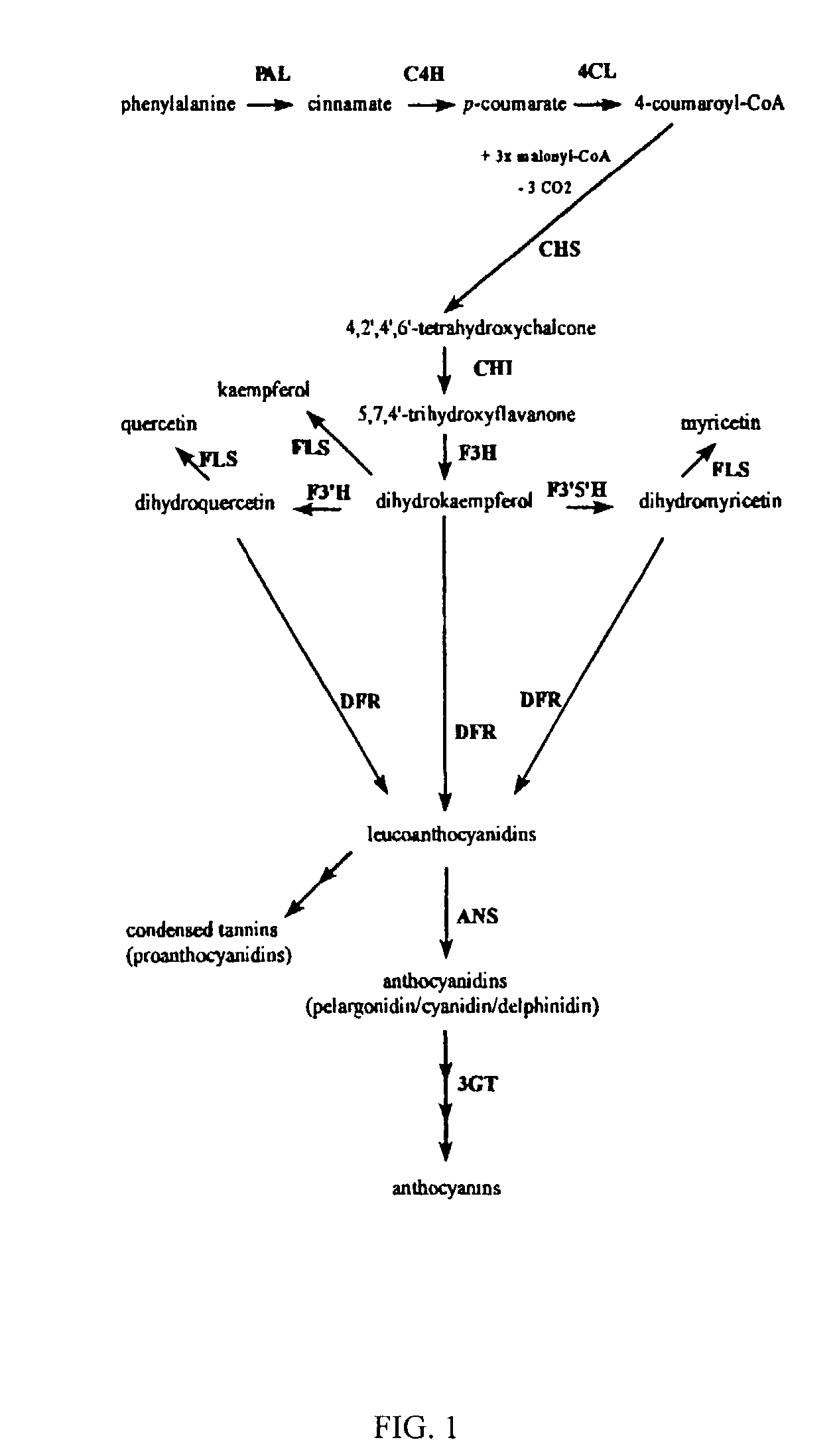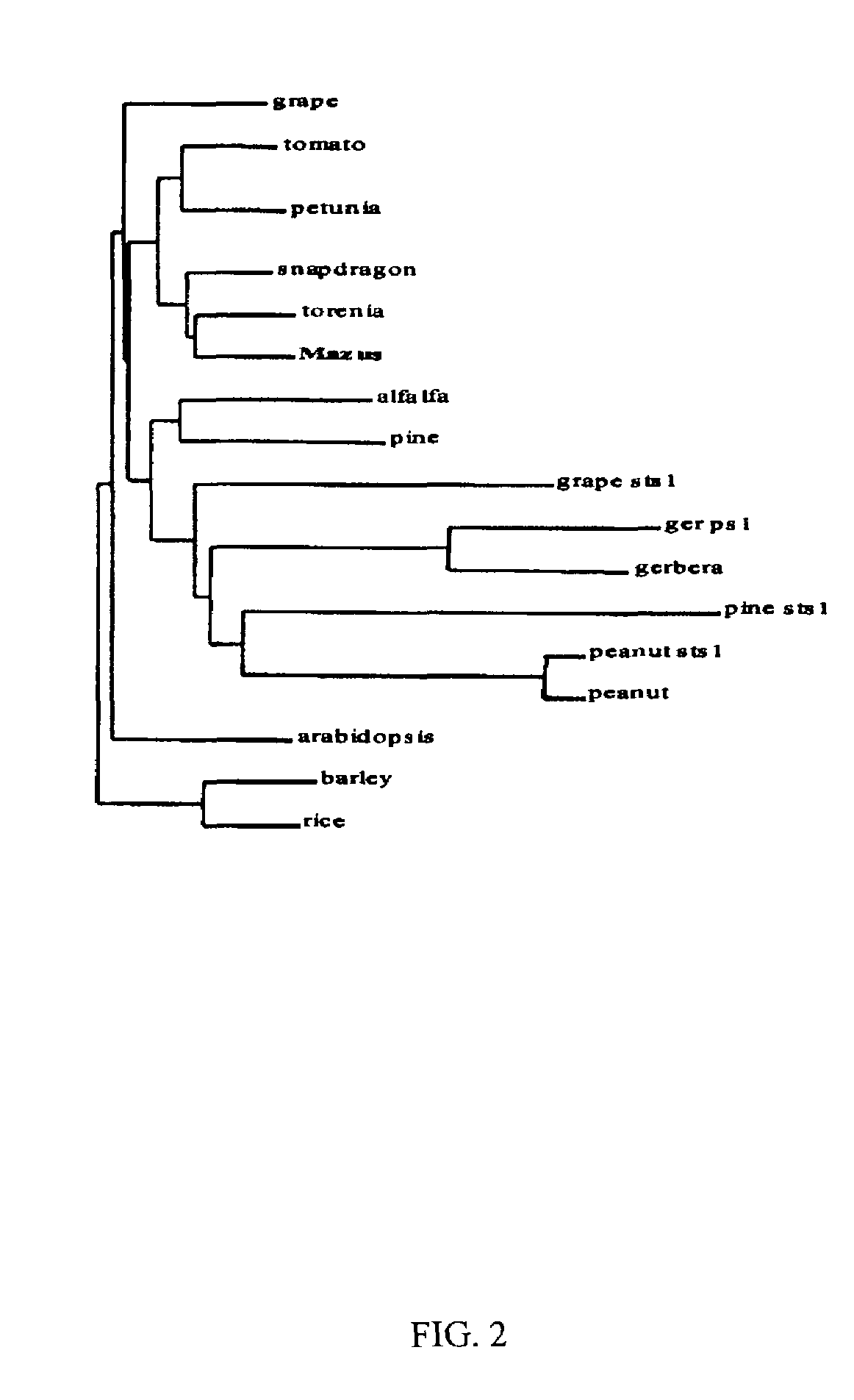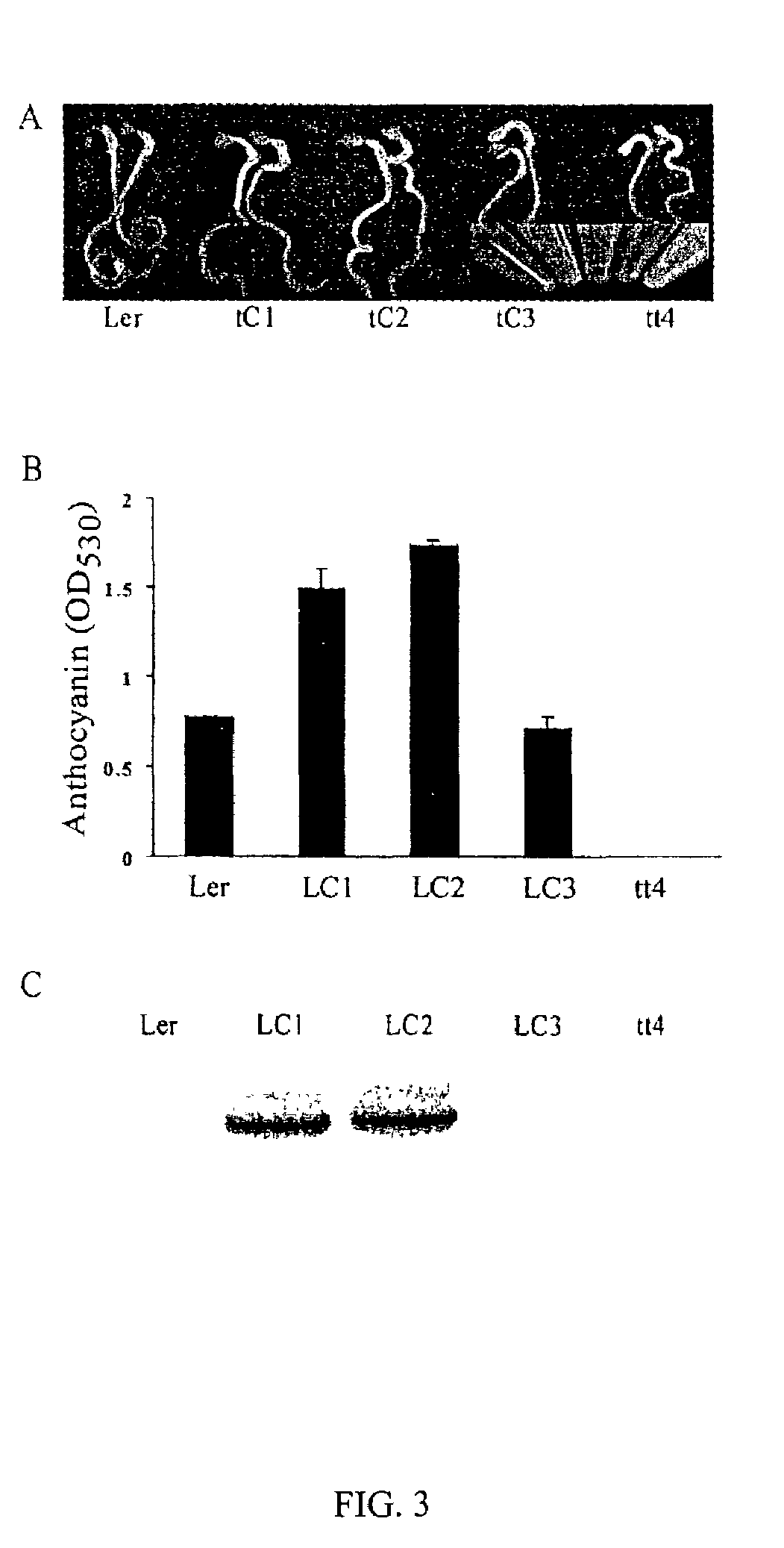Genetic sequences encoding dominant-negative chalcone synthase and uses therefore
- Summary
- Abstract
- Description
- Claims
- Application Information
AI Technical Summary
Benefits of technology
Problems solved by technology
Method used
Image
Examples
examples
Cloning and Characterization of CHS from Mazus japonicus
[0030]A fragment of a putative CHS gene was cloned from Mazus japonicus, a common garden plant belonging to family Scrophulariaceae, using the degenerated primers (5′-TAYCARCARGCNTGYTTYGCNGG-3′ (SEQ ID NO: 7), 5′-NAGDATNGCNGGNCCNC C-3′ (SEQ ID NO: 8)). The full length CHS gene was cloned using the Marathon RACE kit with specific primers (5′-GTTGTCTGCTCCGAGATCACT-3′ (SEQ ID NO: 9) for 3′ RACE, 5′-AGTGATCTCGGAGCAGACAAC-3′ (SEQ ID NO: 10) for 5′ RACE) and the AP2 primer provided by the manufacturer (Clontech, Palo Alto, Calif., USA).
[0031]To determine if the putative CHS gene encodes a functional CHS, the gene was amplified with primers (5′-GAGATCTAGAAAAATGACGCCGACCGTCGAGGAG-3′ (SEQ ID NO: 11) and 5′-GAGATCTAGATCAATTCATGAAGGGCACACT-3′ (SEQ ID NO: 12)) and the amplified product cut with XbaI was cloned into the XbaI site of the GUS-deleted pBI121 vector. The gene cloned into the vector was introduced into Agrobacterium strain GV31...
PUM
| Property | Measurement | Unit |
|---|---|---|
| Length | aaaaa | aaaaa |
| Length | aaaaa | aaaaa |
| Content | aaaaa | aaaaa |
Abstract
Description
Claims
Application Information
 Login to View More
Login to View More - R&D
- Intellectual Property
- Life Sciences
- Materials
- Tech Scout
- Unparalleled Data Quality
- Higher Quality Content
- 60% Fewer Hallucinations
Browse by: Latest US Patents, China's latest patents, Technical Efficacy Thesaurus, Application Domain, Technology Topic, Popular Technical Reports.
© 2025 PatSnap. All rights reserved.Legal|Privacy policy|Modern Slavery Act Transparency Statement|Sitemap|About US| Contact US: help@patsnap.com



